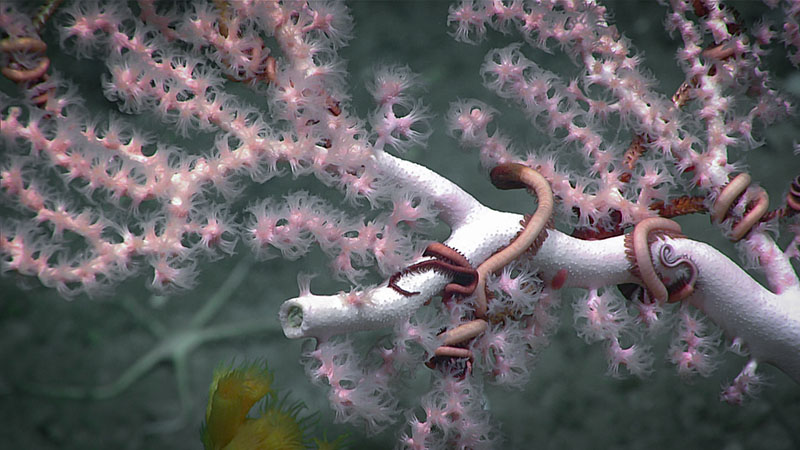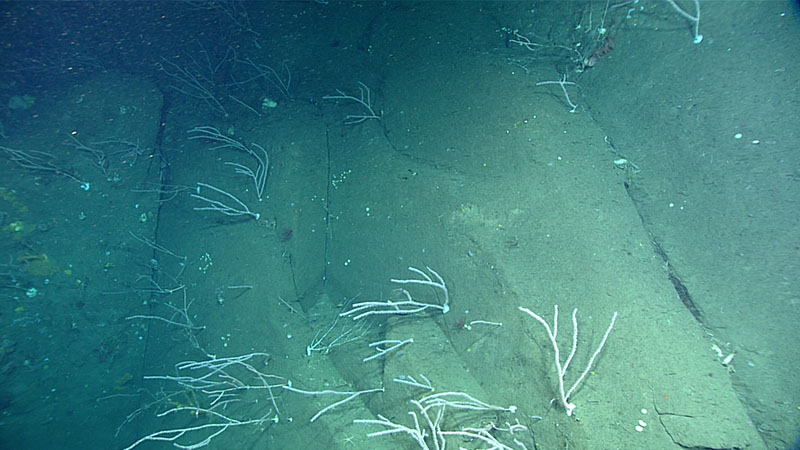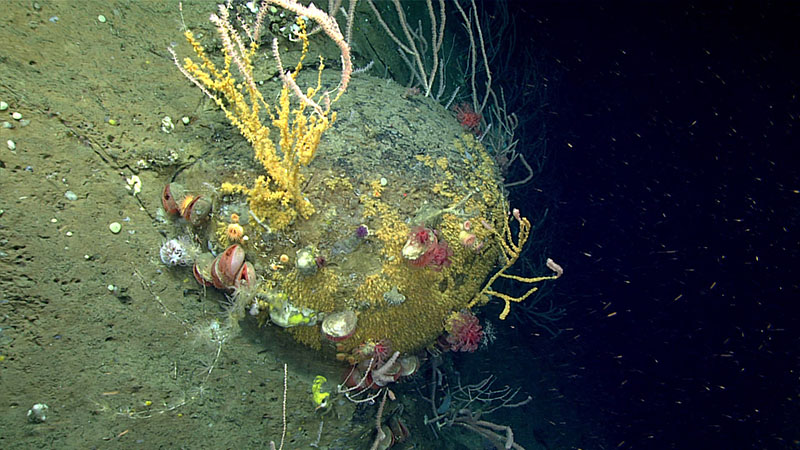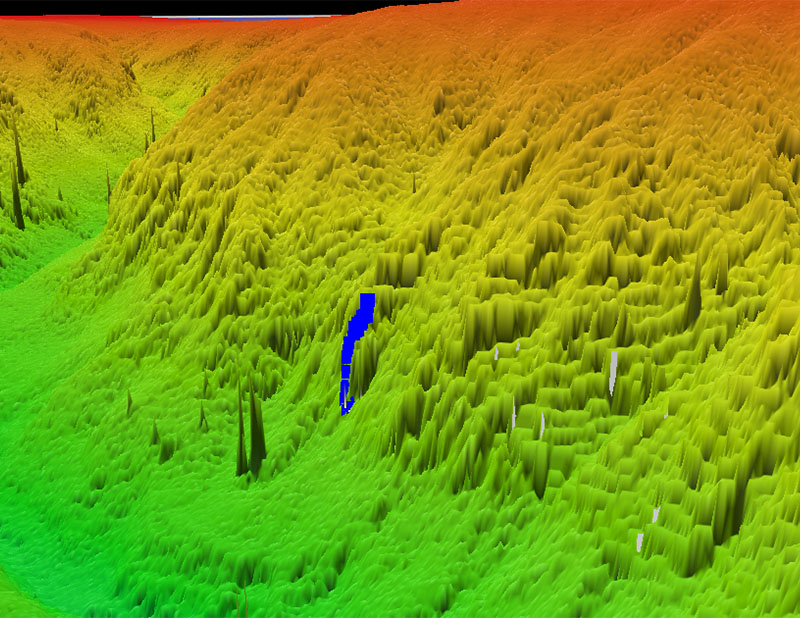
Date: August 29, 2019
Location: Lat: 43.89978°, Lon: -58.94058°
Dive Depth Range: 1,087 - 1,323 meters (3,570 - 4,342 feet)
Access Dive Summary and ROV Data
Highlights from the first dive of the expedition, exploring the Gully Marine Protected Area. During the dive, we encountered a stunningly diverse and dense array of marine life, providing greater insights into this protected submarine canyon. Video courtesy of the NOAA Office of Ocean Exploration and Research, Deep Connections 2019. Download larger version (mp4, 85.3 MB).
After a two-day delay due to weather and engine troubles, we were able to get underway yesterday afternoon, and arrived at our first dive site late this morning. Despite a later dive start, the various operational teams were able to organize quickly to allow us to stay on bottom later than usual, ensuring that we maximize our exploration time.

A bubblegum coral with associated snake stars documented during Dive 01 in Gully Canyon. Image courtesy of the NOAA Office of Ocean Exploration and Research, Deep Connections 2019. Download larger version (jpg, 1 MB).

Dense community of bamboo corals documented on a steep slope incised with along-slope rills during Dive 01 in the Gully Canyon. Image courtesy of the NOAA Office of Ocean Exploration and Research, Deep Connections 2019. Download larger version (jpg, 945 KB).
This first dive took place at the highly anticipated site of the Gully Marine Protected Area (MPA), which protects the largest submarine canyon in the Western North Atlantic. Specifically, we surveyed the eastern flank of the canyon. Previous studies in the Gully MPA have documented a wide diversity of habitats and species; however, many deepwater areas, particularly of this eastern flank, remained completely unexplored. The purpose of this dive was to survey the previously unexplored eastern flank of the canyon, as well as to document potentially undescribed species, particularly sponges. Furthermore, during this dive, the team sought to survey water column communities during both the descent and ascent phases of the dive in order to make connections between species living in the water column and on the seafloor.

A diverse invertebrate community consisting of bamboo corals, zoanthids, mushroom corals, cup corals, and bivalves documented on a large rock during Dive 01. Image courtesy of the NOAA Office of Ocean Exploration and Research, Deep Connections 2019. Download larger version (jpg, 1.1 MB).

Close-up view of a diverse assemblage documented on Dive 01 inside the Gully Canyon, including bamboo corals, zoanthids, encrusting demosponges, hydroids, an anemone, a Freyella elegans seastar, and a squat lobster. Image courtesy of the NOAA Office of Ocean Exploration and Research, Deep Connections 2019. Download larger version (jpg, 1.4 MB).
Once the remotely operated vehicle (ROV) arrived on the seafloor, we traversed a steep slope where we documented a very dense community of deep-sea corals and sponges. Three specimens of sponges were collected during the dive, two of which likely represent new species or records for this area. Additionally, the ROV was able to collect two deep-sea coral specimens, one of a bubblegum coral and the other of a bamboo coral.

Location of Dive 1 on August 29, 2019. Download larger version (jpg, 1.3 MB).

Map showing the dive track of dive 1 of the Deep Connections 2019 expedition, which explored the eastern flank of Gully Canyon. This eastern flank had not previously been explored with deep-water submersible vehicles. Download larger version (jpg, 789 KB).